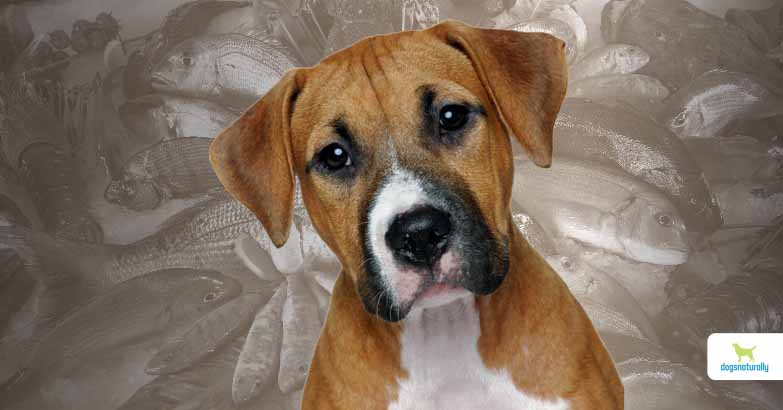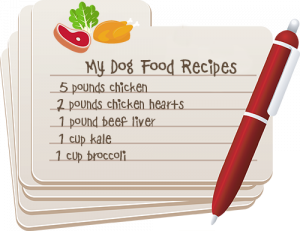Can dogs eat raw fish? They can! Raw fish is safe for your dog – in fact, it’s safe for most humans! But people have a fear of raw fish and parasites.
Humans in general are paranoid about parasites. But people and animals have safely eaten raw fish for thousands of years with no ill effects.
Many raw feeders love to supplement their dog’s diet with fish because of the omega-3 benefits. Oily fish like salmon, mackerel, herring or sardines are popular for this reason. And it’s true there’s a risk of parasites with raw fish … but it’s a risk you can easily minimize.
Raw Fish For Dogs
For most dogs, eating raw fish is a great addition to their diets. Simply stated, if your dog’s immune system is functioning well, parasites won’t be a concern.
But if your dog’s immune-compromised you may need to be more cautious. Or you have a stubborn worm problem in any dog in your household … then you might want to consider fish as a source of the problem. In those cases, keep reading to find out how to lower the risk of your dog getting parasites.
Parasites In Raw Fish
These are the parasites that are most common in raw fish.
Flukes (Trematodes)
Flukes can be commonly found on the fish’s skin or in the organs. For the most part, they’re harmless to dogs. But there have been reports of Pacific Salmon carrying flukes that can cause poisoning in dogs. And recently, the California Department Of Fish and Wildlife issued a warning to dog owners about salmon poisoning disease from the Neorickettsia helminthoeca organism transmitted by flukes.
Only members of the canid family are susceptible to flukes. Cats, bears and other predators do not suffer the same illness as dogs, coyotes and wolves do. Fortunately, most flukes are visible to the eye, so if you feed Pacific salmon, you should be able to see the flukes. They’re flattened and ribbon-like, or may be oval or worm-shaped. If you spot them, you can cook it to eliminate the risk of infection.
Symptoms of salmon poisoning disease include fever, appetite loss, vomiting, diarrhea, listlessness and rapid weight loss, so if you see these signs in your dog after eating Pacific salmon or trout, take your dog to the vet.
Roundworms (Nematodes)
Roundworms look like big, but short human hair (25-150 mm long, 2 mm in diameter). They lie perpendicular to muscle striations (the pattern of striae in the flesh) in fish, and have a white translucent sheen.
Wild salmon may contain roundworms, but farm raised salmon hardly ever does.
Unfortunately, farmed fish can be fed growth hormones and contain residues of drugs meant to prevent diseases. These hatcheries are very often owned by large companies that also produce cattle feed, and recycle human foods. You can imagine that feeding these fish recycled, rancid foods causes them to contain damaged cholesterol and trans fatty acids.
So it’s still safest to feed your dog wild caught and not farmed salmon.
Tapeworms (cestodes)
Tapeworm is the largest threat with raw fish. Tapeworms are found in the internal organs (especially the intestines) and body cavities of the fish. You can avoid them by feeding the flesh of the fish, staying away from all organs – but then your dog will lose the benefit of the rich nutrition from the organs.
How To Get Rid Of Parasites In Raw Fish
Your vet and others may try to discourage you from feeding your dog raw fish because of parasites. Fortunately, there is an easy way to prevent your dog from getting parasites from raw fish – freeze it!
A lot of fish you buy has already been frozen or you’ll even buy it frozen. But if not, freeze all of your dog’s fish for a week before feeding and you shouldn’t have to worry about parasites.
How Long To Freeze Raw Fish
The FDA’s fish freezing recommendations offer these options which they state “are sufficient to kill parasites” …
- Freeze and store at an ambient temperature of -4°F (-20°C) or below for 7 days (total time)
- Freeze at an ambient temperature of -31°F (-35°C) or below until solid and store at an ambient temperature of -31°F (-35°C) or below for 15 hours
- Freeze at an ambient temperature of -31°F (-35°C) or below until solid and store at an ambient temperature of -4°F (-20°C) or below for 24 hours
Can Dogs Eat Raw Fish Bones?
Yes, raw fish bones are softer than cooked bones, When people eat fish, we’re careful to pick out all the small bones before we eat, for fear of getting bones stuck in our throats. But cooked bones are sharper and more brittle. Raw fish bones are softer and go down more easily. So, most dogs don’t have a problem with raw fish bones. Dogs also don’t chew much, so the small bones are still embedded in the fish flesh as it goes down!
Frozen Fish For Dogs
Some dog owners feed their dogs fish still frozen. That’s a safe option and it may help slow down your dog’s eating. Also, if you’re worried about bones in the throat, feeding your dog’s raw fish still frozen could be a solution. That way it’s all one big crunchy piece and he’ll chew up the bones along with the frozen flesh.
Canned Fish For Dogs
It’s also fine to give your dog canned fish like salmon, sardines or mackerel. Choose canned fish packed in water without added salt, rather than in oil.
You can also give your dog the benefits of omega-3 fatty acids by adding omega-3 oils to his diet. Fish oil isn’t the best option for several reasons, so consider options like green lipped mussel oil, which has a much wider range of fatty acids that help manage inflammation, and is sustainably farmed.
RELATED: Read why fish oil isn’t the best choice for your dog …
Raw fish is a great addition to your dog’s diet. Just be sure it’s been frozen for long enough to eliminate parasites.










